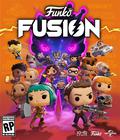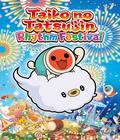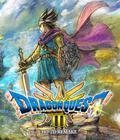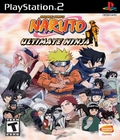Genre: Fighting
Developer: CyberConnect2
Publisher: Namco Bandai Games
Release Date: June 27, 2006
Naruto fever is sweeping America! Much like Dragon Ball Z before it, the Naruto anime series is colorful, exciting, and largely inoffensive. It also is long – nearly two-hundred episodes have been produced, with many more on the way. It has become a mainstream merchandising force, so it was only a matter of time before games followed. What most people probably don’t know is that two-dozen games featuring the Naruto license have already been released or are in the works for the Japanese market. What does this mean for America? Prepare for an onslaught of Naruto gaming experiences.
Granted, we probably will not see Naruto: Konoha Ninpouchou for the WonderSwan Color or Naruto: Shinobi no Sato no Jintori Kassen for the original PlayStation, but I would expect most of the others to arrive from a handful of companies. D3Publisher of America released two of them earlier this year: Naruto: Clash of Ninja for the GameCube and Naruto: Ninja Council for the Game Boy Advance. Ninja Council is a fairly standard (albeit short) side-scroller, but Clash of Ninja is the first in a series of fighting games beloved by importers. I found it to be seriously lacking in content, but it seemed like a good base title for the three sequels to have built upon.
Courtesy of Namco Bandai Games, we now have a Naruto game in the States for those of you without a Nintendo system. Naruto: Ultimate Ninja for the PlayStation 2 is not a standard fighter in the vein of Clash of Ninja, rather a free-for-all rumble with all sorts of items and special attacks. It recalls two of the most revered fighting franchises of the last decade: Super Smash Bros. and Power Stone. While unlikely to be a title that will appeal to non-fans, Ultimate Ninja is a fast, enjoyable title that offers a heap of unlockable content. It may not revolutionize the genre, but it offers an uncommon alternative to standard fighting conventions, and is one of the better anime-inspired games in recent memory.
As noted earlier, Ultimate Hero has quite a bit in common with loose brawlers like Super Smash Bros. Melee. The game takes place in two-dimensional settings (inspired by the anime), but each stage has several different areas that can be accessed by pressing up or down, along with the x button. In one stage, you can ascend upwards to fight on a tight-wire or on a building balcony. On another, you can actually go underground at a dig site and fight it out in a tunnel. The stages are populated with helpful bystanders who will drop items for your use. Items include myriad projectiles, as well as power-ups. Your success in each battle will often depend on your use of the entire stage and every aspect of it. Move around a bit!
Due to the exploratory nature of the environments, the battle system was kept as simple as possible. In fact, you only have one regular attack to use, though you can also toss obtained projectiles at your foe. As with many fighting games, you have a special meter under your life bar that fills up over the course of the battle. Additionally, you may lose some of this chakra in the form of glowing balls that can emerge after a series of hits. Pick ‘em back up before your opponent does! When your meter fills up, press the triangle button to activate your chakra – your character will glow for a couple of seconds, during which you should land a hit on your enemy. Doing so will activate one of your super moves.
Unlike Clash of Ninja, you actually have to put in a bit of effort to use your special moves. After the screen clears and the in-game movie clip initiates, you are prompted to hit a series of buttons – but so does your opponent. If your opponent can also knock out his button combination, your move will do less damage. By executing your own button combos in the limited time provided, you increase the total effect of the move. Though these specials are not as easy to perform as the ones in Clash of Ninja, I still found them to be too prevalent. You will be able to pull off two or three in a match, making for a quick and ultimately repetitive fighting experience, at least in the single-player modes.
Scenario mode lets you play as each character through a handful of matches, complete with story sequences in-between. Unfortunately, it is not a great improvement over the story mode from Clash of Ninja. It doesn’t feel like the effort was put in to take these characters beyond the content already presented in the series. For example, playing as Sakara reveals segments about being in love and being doubted as a fighter because she is a girl. Okay… are we not able to go beyond the bare bones of character development? The Mission mode provides for a more varied experience, with a heap of increasingly difficult missions with different objectives. Completionists with a ton of time to spare will drool over the bizarre requirements of the later missions (example: defeat your enemy by finishing him in the air, but only if you’ve done a particular move three times in the match).
Scenario mode is a bit too basic, and Mission mode is for the hardcore; the game would have been better served by a larger quest mode – perhaps something that would combine those two gametypes. As it is, those modes are flanked only by the requisite Practice and Free Battle modes. Also worth noting are the ryo earned from each battle. Depending on your performance, you are rewarded with a certain amount of ryo to use in the Shop, which is accessed from the main menu. From there, you are able to insert ryo into the available capsule machines – the more you insert, the more the possibility of receiving nothing lessens. If you do end up with something, it could be anything from a useable in-game item to a video clip of a character performing a special move. Those of us who are not Naruto-obsessed will be disappointed by anything other than a new item.
For me, the most impressive aspect of the game was the overall visual presentation. Everything has a hand-drawn look, though the characters are actually cel-shaded 3D models. While the characters in Clash of Ninja had a similar look, I think they look much nicer in Ultimate Ninja. They have more of an aggressive, dirty look, as if they were inspired more by the original manga than the anime series. The special moves look great, and the pre-match banter is shown via manga-style comic panels. The voice work is also rather well done, as it was in Clash of Ninja. A massive cast of well-known voice actors was used, and it certainly enhances the overall experience for Naruto fans.
Like Smash Bros. before it, the single-player experience becomes dull pretty quickly, but the multiplayer salvages the game. Naruto: Ultimate Ninja is a simple and fun brawler that falls just short of transcending the license. Still, if you are a fan of the series, this game is as good as it gets for now, unless you are into the import scene. Future iterations (already out in Japan) promise more, more, more: more characters, more locations, and hopefully more interesting things to do without a second player. As with the Dragon Ball Z: Budokai series, these games will hopefully get better with each subsequent release.
Score: 7.0/10
More articles about Naruto: Ultimate Ninja











 Naruto: Ultimate Ninja features 14 playable characters, a variety of fighting moves, including base, combos, super, and projectile attacks. With lush environments playable on two different planes, this much-anticipated game offers four exciting gameplay modes and a series of collectible items, including trading cards, toys, music, and movies.
Naruto: Ultimate Ninja features 14 playable characters, a variety of fighting moves, including base, combos, super, and projectile attacks. With lush environments playable on two different planes, this much-anticipated game offers four exciting gameplay modes and a series of collectible items, including trading cards, toys, music, and movies.





















